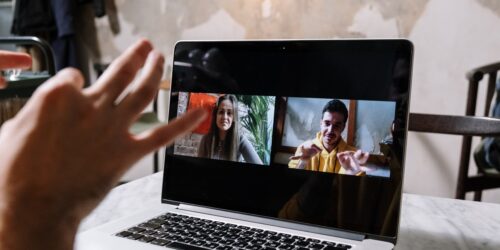The Neurodiverse Classroom and Collaborative Work
What? The main purpose of this teaching tip is to assist educators in supporting neurodiverse groups in collaborating.
So What? This is important because 1 in 10 students at Conestoga has a documented disability, which will impact how educators provide learning opportunities.
Now What? This teaching tip will provide educators with concrete ways to support groups that involve neurotypical learners and learners with disabilities when working collaboratively.
What is Neurodiversity?
Neurodiversity is a relatively new term that approaches differences in cognition (e.g., ways we process information, form, patterns, and associations) as natural variations in the human mind. This approach challenges how we currently discuss disability (where there is often a focus on causation and cure) and instead focuses on celebrating variations in the human mind as inseparable parts of people’s identities (Kapp et al., 2013). As educators, embracing this viewpoint can help us to be more welcoming to neurodiverse students (or our neurodivergent students) and to show them that their presence and contributions are valued. This viewpoint can also help us to push our neurotypical students (i.e., individuals who process information in ways that are considered typical for the culture that individual is part of) to expand their thinking and learn from their peers’ unique viewpoints. Among the most common forms of neurodiversity represented within the Conestoga student population are Autism Spectrum Disorder (ASD) and Attention Deficit-Hyperactivity Disorder (ADHD). If you are new to educating students with these diagnoses, Accessible Learning can provide you with information to understand what these students’ learning styles might be and how you can support individual students in your class.
The Suggested Approach: Universal Design for Learning
Universal Design for Learning, or UDL, is the process through which educators remove barriers to learning to ensure that all their students can learn in their classroom (Armstrong, 2012). One way in which educators can do this is by shifting from problem-based learning strategies (i.e., only asking “what might some students struggle with?”) to strength-based learning strategies, where we focus on how this information can inform course planning. By being proactive and creating course content with all types of learners in mind, educators will be well-positioned to teach any group of students who show up in your class.
UDL and Collaborative Work
- While students and faculty are likely all familiar with the concept that the classrooms of today are diverse in terms of race, ethnic origin, culture, etc., the majority of educators and students are quite new to the concept of neurodiversity – in fact, it is a relatively new approach to thinking about disability. It can be helpful to introduce students to the concept of neurodiversity, and explain that, in Conestoga’s classrooms, a variety of thinking and learning styles will be represented.
- Discuss having students integrate the principles of strength-based strategies into their collaborative work. For example, when dividing tasks, group members should be given the opportunity to share what they see as their strengths, or the areas that they are most interested in working on. Sometimes, many students can have difficulty identifying their own capabilities. Faculty can support in this by providing students with a skills inventory list (see this Skills Inventory, as an example) and having students each pick out their top three strengths. Faculty can then support students to effectively translate these into roles and expressed learning needs in group work. For example, an example of this may be simply having students share with others in their groups the following: “My strength is written communication. Having information written helps me process and understand better. It would help me if we have live captions in our group Zoom meetings and notes taken during our meetings.”
- It is also important for faculty to encourage any student who mentions a disability to register with Accessible Learning for appropriate learning supports and potential accommodations.
By asking your students to invoke principles of neurodiversity and UDL into their work, you will be providing them with invaluable skills that they can take with them into the field. In any line of work, students will be exposed to people whose thinking and learning styles are different from their own. By giving them the opportunity to consider how to navigate, and thrive, in these situations, you are preparing them for the diverse workforce they will soon be involved in.
Want To Learn More About Neurodiversity?
For more information and resources on neurodiversity, check out Conestoga’s Neurodiversity Resource Guide! All resources listed in this guide – including fiction and non-fiction books, journal articles, and videos – are available for anyone in the Conestoga community to access.
References
Armstrong, T. (2012). First, discover their strengths. Educational Leadership: Journal of the Department of Supervision and Curriculum Development, 70, 10-16.
Kapp, S. K., Gillespie-Lynch, K., Sherman, L. E., & Hutman, T. (2013). Deficit, difference, or both? Autism and neurodiversity. Developmental Psychology, 49, 59-71.



